Before a cookbook was ever even a glimmer in the back of my mind, I’d always envisioned cookbook shoots to be high-intensity, elaborate affairs requiring a village to create. And in some cases, this is true.
My hubby Will used to recount that in his early days of photography, fresh out of school, he assisted a Williams-Sonoma shoot that took over an entire house. He was only one of three photo assistants on set, alongside the photographer and the art director, prop stylist, food stylist, and all of their assistants. They would spend upwards of 2 to 3 weeks shooting everything they needed to shoot, working 10- to 12-hour days back to back. It was a huge production.
Fast forward 12 years later, and his next cookbook shoot would involve neither a lavish location rental nor a herd of assistants, but myself, two pugs, and a pile of props packed into a corner of our living room.
Cookbook shoots come in all shapes and sizes. Some shoots take place in professional daylight studios, while others are staged in friends’ kitchens. Some involve assistants and stylists, while others solely rely on the author to take over all of those tasks.
When it came to my own, the publisher already had Will in mind as the photographer for my book, so we were hitched from the start and knew what each of us was bringing to the table. We opted to keep our shoots low key, stress free, and highly flexible, shooting concurrently with my recipe developing. Some days this meant we shot two recipes, while others saw at least six or seven meals on the table.
Traditionally, cookbook shoots happened after the the manuscript was finished, with several days set aside on the timeline for a photographer to capture only the best recipes. Since Will and I had no schedule, no extra bodies to coordinate, and complete creative control over the images (and, you know, we happened to live together), we had the advantage of being able to shoot all the recipes as I tested them.
Every single one. Yes, every recipe in my book will have an accompanying image!
Browsing other books, I’ve found that I tend to skip over recipes with no visuals. Even if it’s not a recipe I might end up making, I love a good food shot to entice me, draw me in to the story, and inspire me in my cooking. I’m a very visual person, and to me, food is art.
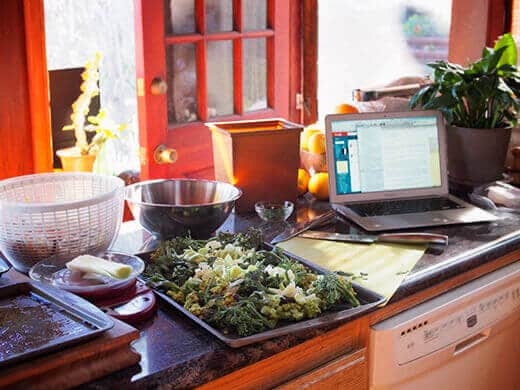
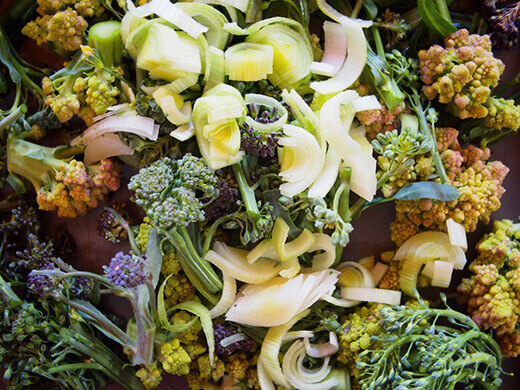
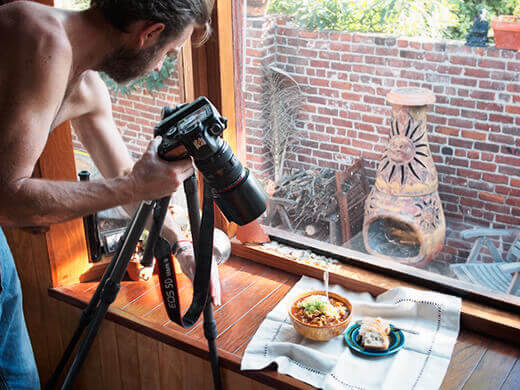
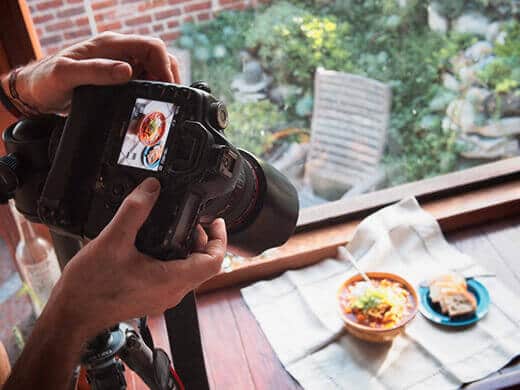
With no one peering over our shoulders, staring at the monitor and telling us to move this and change that, we had a lot of freedom with our photo shoots. Maybe too much freedom… It’s a little embarrassing to look back on some of the shots I took behind the scenes, because as a husband-and-wife team working at home, that meant a lot of unbrushed hair, pajama pants, and fuzzy slippers (or in Will’s case, no shirt). (Luckily, as the person doing the behind-the-scenes shots, that also meant I was spared from most of them!)
So what exactly goes on behind the scenes of a cookbook shoot? Aside from food, propping is a big part of it. We wanted all of our various props, from the surfaces and linens to the silverware and dishes, to convey the look-and-feel of a farm-to-table book.
Part of our property is a no-man’s land. A few summers ago, we had wild tomatoes taking over the grounds. The chickens roam it now, finding plenty of opportunities for dust bathing. When Will moved his photo studio home, it became a holding area for all of his backdrops and furniture. And with a bungalow in Baja that always loves a good project, we constantly save and store materials that we’ve scavenged from back alleys and roadsides.
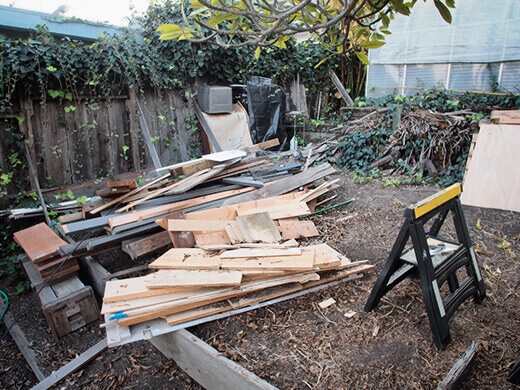
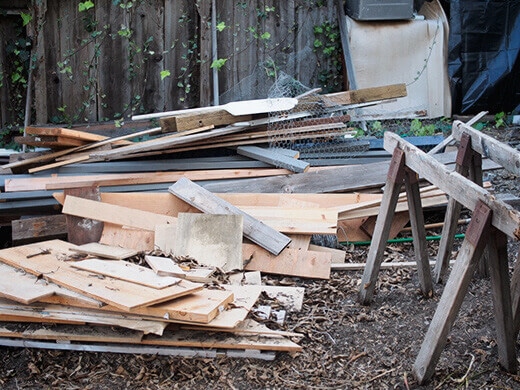
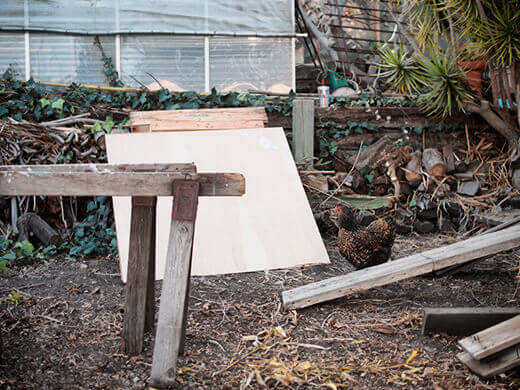
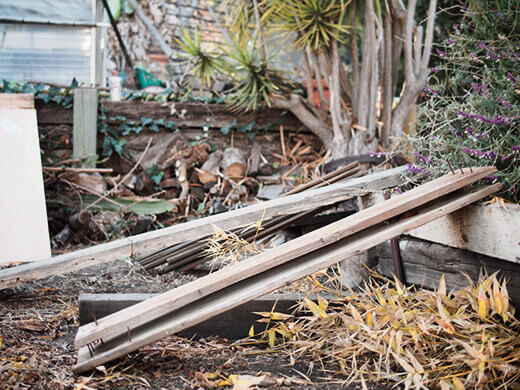
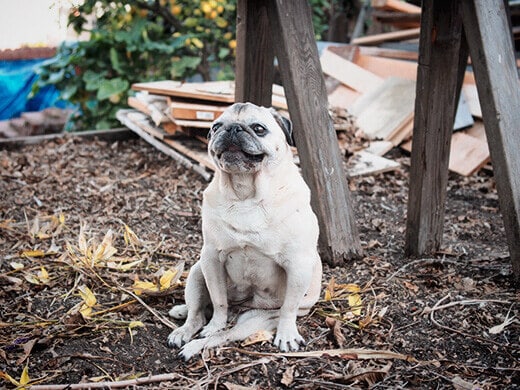
We built quite a few of our own surfaces using vintage wooden planks, rusted copper panels, and recycled old tabletops, most of which we’d collected on our road trips for “some day,” and also stained a few sheets of plywood that we’d found in the clearance aisle of Home Depot.
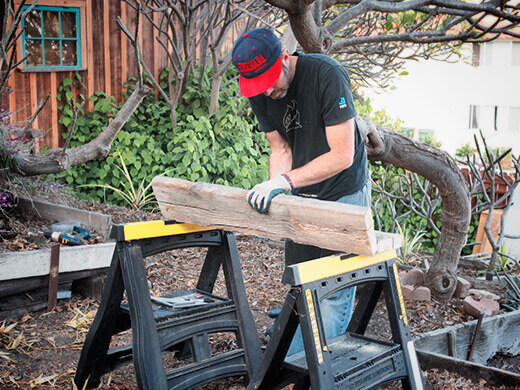
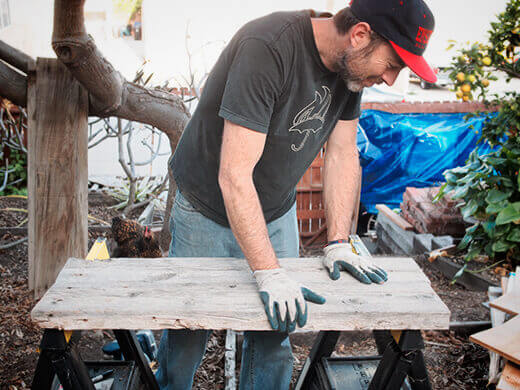
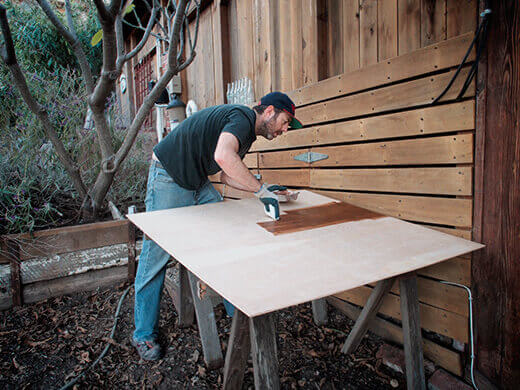
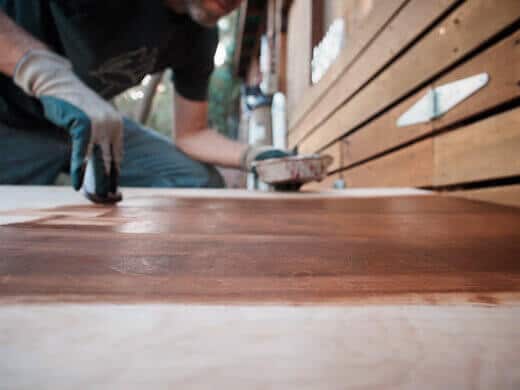
We also shot on all of the existing tables in our house, along with the counters, floors, decks, and patios. It helps to have a home that’s already farm-to-table-ish!
After the surfaces came the table settings — the plates, bowls, boards, platters, glasses, jars, utensils, and linens that told the rest of the story in a food scene.
We picked up lots of odds and ends from the thrift stores and vintage shops up the street (our neighborhood is a treasure trove of antiques), raided our own cupboards, and borrowed the rest. On a typical shoot day, our sun room (if we weren’t shooting in it) doubled as our prop room.
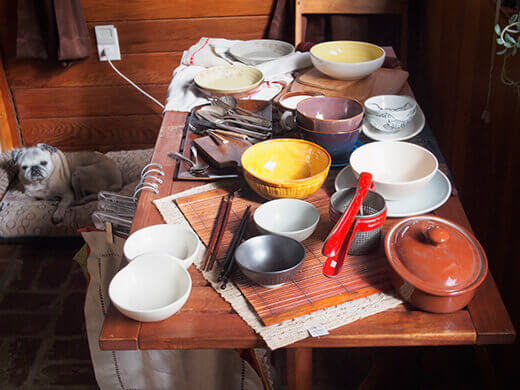
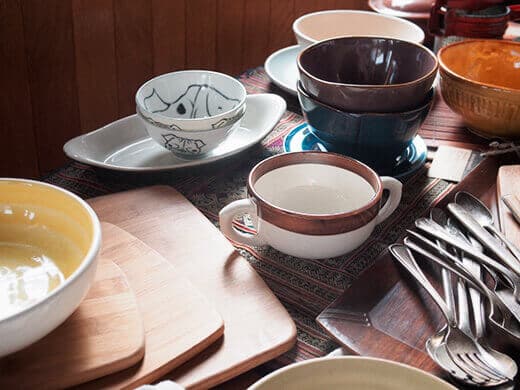
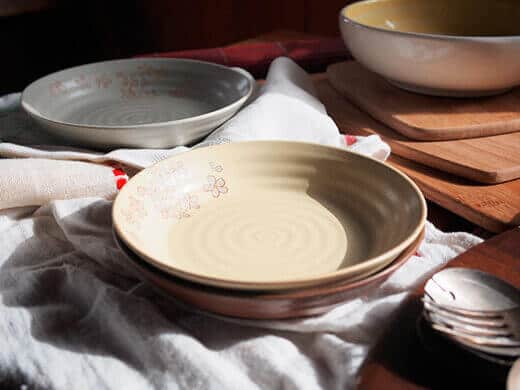
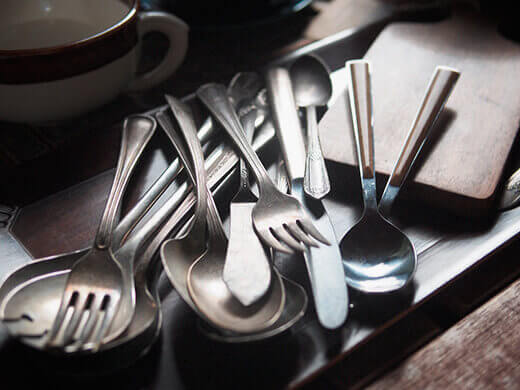
We shot in nearly every nook and cranny in our house with good light and hauled everything outside when it was good weather. And if you thought our photo shoots might have been glamorous and fast paced and full of hipster assistants fetching us coconut water (after all, Will did begin his career shooting fashion), this is what it usually looked like in our living room, after rearranging our furniture for the umpteenth time.
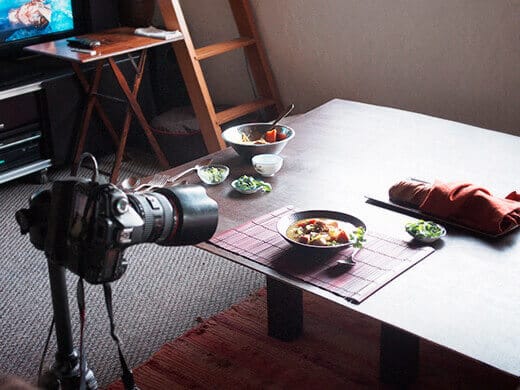
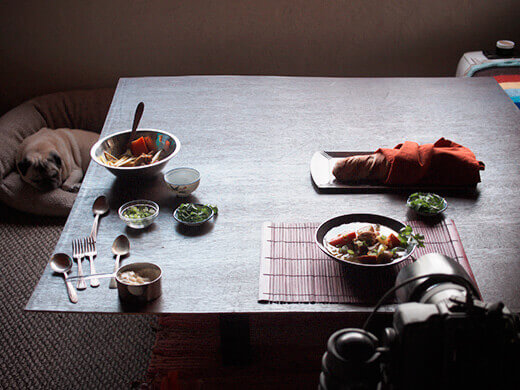
But we did get to eat. A lot. (Er, too much, and my skinny jeans begged for mercy.) Sometimes we’d snack on leftovers on set, like these carrots and hummus, served in the same measuring cups I’d been using so I wouldn’t have to wash another dish.
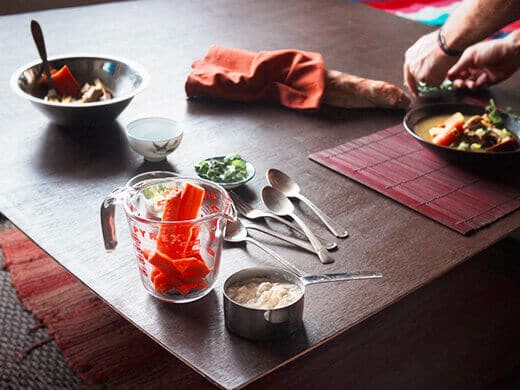
At the end of the shoot, we’d finally get our grub on… with platters of cold food that, if either of us had any energy left, we’d hastily reheat so we could have a proper meal. (This is why soups were among my favorite recipes to make because they stayed warm on the stove all day!)
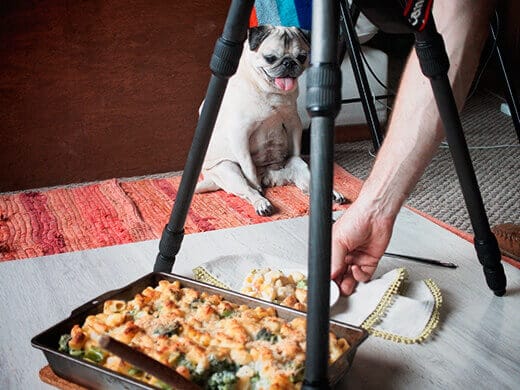
Of course, shooting in the same location day after day can get a little stale, so the cookbook was a great excuse to take our show on the road and shoot in other people’s kitchens.
Next stop: NorCal!
Read the full “Making of a Cookbook” series:
- El Libro: It’s Happening!
- The Making of a Cookbook: Writing the Manuscript
- Behind the Scenes of a Cookbook Photo Shoot (Part I)
- Behind the Scenes of a Cookbook Photo Shoot (Part II)
- The Making of a Cookbook: The Cover Shot


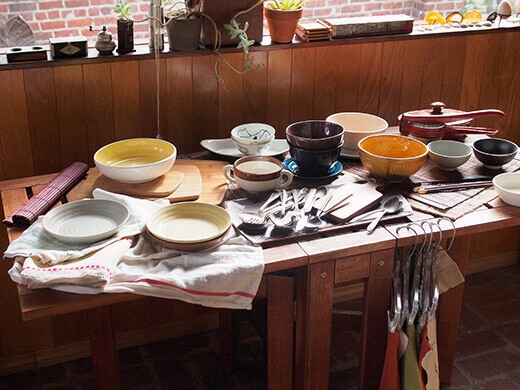













Congratulations on the making of this beautiful book! Thank you for sharing how you put it all together – I always love to hear how it was done!
Hard to believe it’s been a year already! I still remember hauling home slats of wood and baskets of produce like it was last week!
RT @theGardenBetty: What it’s like to produce the food shots you see in a cookbook. Behind the Scenes of a Cookbook Photo Shoot (Part I) ht…
Thanks for the mention! RT @roxbert: Behind the Scenes of a Cookbook Photo Shoot (Part I) http://t.co/wknC330G4q via @theGardenBetty
Behind the Scenes of a Cookbook Photo Shoot (Part I) http://t.co/Z9pDT10tUm via @theGardenBetty
RT @theGardenBetty: What it’s like to produce the food shots you see in a cookbook. Behind the Scenes of a Cookbook Photo Shoot (Part I) ht…
RT @theGardenBetty: What it’s like to produce the food shots you see in a cookbook. Behind the Scenes of a Cookbook Photo Shoot (Part I) ht…
What it’s like to produce the food shots you see in a cookbook. Behind the Scenes of a Cookbook Photo Shoot (Part I) http://t.co/GiBpTEgVRC
I now have a shelf full of mismatched dishes and one-off linens. Behind the Scenes of a Cookbook Photo Shoot (Part I) http://t.co/tqYkNfV9ZP
Ever wondered what goes on with all the food prep and propping? Behind the Scenes of a Cookbook Photo Shoot (Part I) http://t.co/pJury8qP4s
It’s not as glamorous as you might think. But we do eat. A lot. Behind the Scenes of a Cookbook Photo Shoot (Part I) http://t.co/SOATjnqDzq
What the last six months have looked like at my house: Behind the Scenes of a Cookbook Photo Shoot (Part I) http://t.co/ipxIxClhqm
I LOVE the pugs in the background! They’re watching you with kind of an amused view of “NOW what are you doing? You JUST did that.”
LOL… They also couldn’t eat until the end, when all the food was cold, so they were probably over it.
Blogged on Garden Betty: Behind the Scenes of a Cookbook Photo Shoot (Part I) http://t.co/eiFwmfpJtO